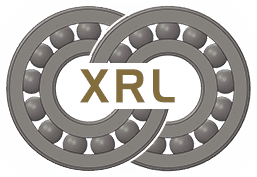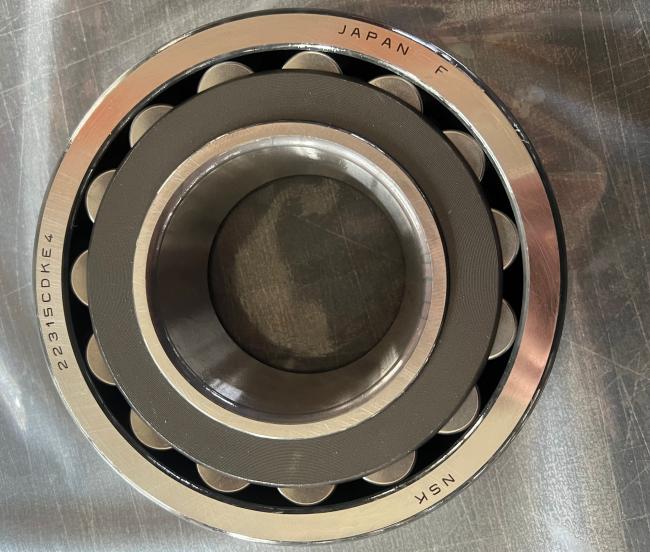Regular inspection or replacement of parts requires disassembly of bearings. Usually the shaft and bearing housing almost always continue to be used, and the bearings also tend to continue to be used. Therefore, when designing the mechanical structure, consideration should be given to disassembling the bearings so as not to damage the bearings, shafts, bearing boxes and other parts, and appropriate disassembly tools should also be prepared. When disassembling a ferrule with an interference fit, only tensile force can be applied to the ferrule, and the ferrule must not be pulled through the rolling elements. SKF bearing model query disassembly tool is the most suitable tool press for disassembling bearings. When using a press to disassemble a bearing, carefully check whether the lifting part of the press and the axis of the disassembled bearing are perpendicular to each other. In addition, there are some simple manual bearing removal tools, such as pullers, which are also very convenient to use.
Disassembly method of cylindrical bore bearings For non-separable bearings, first remove the bearing from the loose fitting surface (usually the matching surface between the outer ring and the shell aperture), and then use a press to press the bearing out of the tight fitting surface. If the bearing will be used again after being disassembled, the disassembly force must not be transmitted through the rolling elements, otherwise the rolling elements and the ring raceway will be crushed. When removing the bearing for cleaning and inspection, first record the appearance using photography and other methods. In addition, confirm the amount of remaining lubricant and sample the lubricant before cleaning the bearings.
The cleaning of bearings is divided into rough cleaning and fine cleaning, and a metal grid can be placed at the bottom of the container used. ·When rough cleaning, use a brush in oil to remove grease or sticky matter. At this time, if the bearing is rotated in oil, be aware that the rolling surface may be damaged by foreign matter, etc. ·When fine cleaning, slowly rotate the bearing in the oil and do it carefully. The commonly used cleaning agents are neutral non-aqueous diesel or kerosene, and warm alkali solution is sometimes used as needed. No matter which cleaning agent you use, filter it frequently to keep it clean. After cleaning, immediately apply anti-rust oil or anti-rust grease to the bearings.
The maintenance of bearings enables NSK bearings to give full play to and maintain their proper performance for a long time, and regular maintenance (regular inspections) must be carried out effectively. Through appropriate regular inspections, it is very important to detect faults early and prevent accidents before they occur, which is very important for improving productivity and economy. Inspection and Judgment In order to determine whether the removed bearing can be reused, focus on checking its dimensional accuracy, rotational accuracy, internal clearance, mating surface, raceway surface, cage and sealing ring, etc. The inspection results can be judged by those who are used to bearings or who are proficient in bearings. The criteria for judgment vary depending on the mechanical performance, importance, inspection cycle, etc. If the following damage occurs, the bearing must not be reused and must be replaced. Fractures of bearing parts and defects in the raceway surface or peeling of the rolling surface. Bearing fault identification methods can identify or predict whether the bearing is faulty in operation without disassembly and inspection, which is very important to improve productivity and economy.
The main identification methods are as follows: Recognition by voice Recognition by voice requires extensive experience. Sufficient training is required to be able to distinguish bearing sounds from non-bearing sounds. For this reason, the work should be carried out by professionals whenever possible. Use a listening device or listening stick to the shell to clearly hear the sound of the bearing. This method of identification through operating temperature is a comparative identification method and is limited to situations where the operating status does not change much. For this purpose, continuous recording of the temperature is necessary. When a fault occurs, the temperature not only rises but also changes irregularly. This method is suitable for use together with the voice recognition method. The lubricant is sampled and analyzed by identifying the state of the lubricant, and judging whether it is contaminated with foreign matter or metal powder, etc. Identification by Vibration Meter Use a vibration meter to determine the use of bearings. This method is generally used in the papermaking industry. You should accumulate some experience in practical work. This method is particularly effective for bearings or large bearings that cannot be observed closely.
Post time: Oct-10-2023

